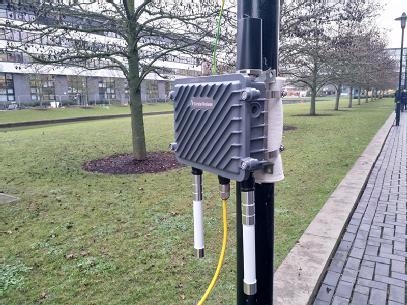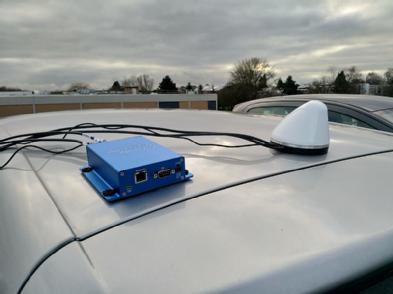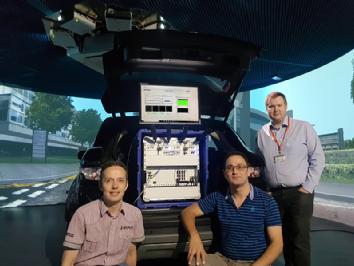WMG News
The future of cyber-security in connected and autonomous mobility analysed by WMG
The Cyber Security for Connected and Autonomous Mobility (CAM) has been investigated in a series of projects funded by the Centre for Connected and Autonomous Vehicles (CCAV) and supported by Zenzic and InnovateUK (part of UKRI).
Out of seven projects, WMG, at the University of Warwick was involved in three:
1. Positioning, Navigation and Timing (PNT) Cyber Resilience: a Lab2Live Observer Based Approach
2. ResiCAV
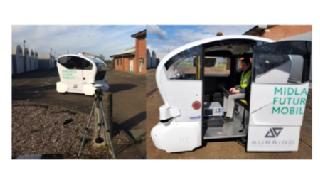 Each project was tasked with exploring innovative methods for measuring and monitoring cyber security, defining a set of requirements for a future Cyber Security facility/capability and understanding the commercial landscape for such a facility.
Each project was tasked with exploring innovative methods for measuring and monitoring cyber security, defining a set of requirements for a future Cyber Security facility/capability and understanding the commercial landscape for such a facility.
These 3 objectives were addressed across a number of different themes with Cyber for CAM: Monitoring, Threats to connected vehicle, networks, Threats to automated vehicles or Countermeasure and risk mitigation.
Dr Elijah Adegoke, from WMG, University of Warwick was involved in the PNT Cyber Resilience project. In collaboration with Spirent, key recommendations made to Government include that spoofing and jamming attacks on GNSS signals are capable of leading to severe loss of functionality and safety in CAVs; thus there is an urgent need to invest in independent facilities capable of seamlessly testing attacks on CAM PNT systems in both controlled laboratory and live environments.
Zenzic, the University of Warwick and Spirent now aim to work with standardisation bodies to guide the development of GNSS attack detection and GNSS resiliency assessment standards, and the responsible disclosure of information on threat actors and attack events.
Dr Adegoke commented: “To investigate jamming and spoofing in CAM PNT systems, a test facility needs to be able to quantify the resilience of a CAV against both radio frequency based and software attacks for diverse receiver operating systems and hardware architectures. Access to a drive-in anechoic chamber, such as WMG’s Communications and Sensors Lab in the Professor Lord Bhattacharyya Building, to allow the legal testing of over-the-air attacks is highly beneficial.”
 Professor Carsten Maple, of WMG, University of Warwick, was involved in ResiCAV and BeARCAT.
Professor Carsten Maple, of WMG, University of Warwick, was involved in ResiCAV and BeARCAT.
ResiCAV was led by Horiba Mira, and highlighted how connected and autonomous vehicles (CAVs) and their associated infrastructure can develop real-time responsiveness to cybersecurity threats, and highlighted the ‘urgent need’ for a national road transport cybersecurity programme in order for the UK to safely support CAV adoption across the transport network. Professor Carsten Maple comments:
“The ResiCAV project has proven that the UK could become a world-leader in automotive cybersecurity and vehicle resilience, however this can only be done if there is a collaboration between industry and the shared use of testbeds. The project has shown that cyber resilience can only be effectively achieved by developing a new engineering methodology. We have, with partners, started the journey to formalising the methodology, and provide the tools and techniques for achieving resilience through manufacture and operation.
“I hope this next step after this project is to see funding for the development of the ‘UK Centre of Excellence for Road Transport Cybersecurity Resilience’ to thrust the UK to the forefront of automotive cybersecurity.”
Professor Maple was also involved in BeARCAT, led by Cisco the BeARCAT project highlights that with the high infrastructure set-up costs and extensive overheads in the management of a test facility for automotive cyber security, the most cost-effective course of action is for a UK CTF (Cyber Test Facility) to be collocate with the existing testbeds. He comments:
“We are pleased to have developed a Security Framework for cyber security testing in the CAV ecosystem, including coverage of security threat modelling and risk assessment. Working with our partners we have defined mechanisms for communications resilience and provide a blueprint, based on the security framework, for testing certification. We hope these contributions will be helpful to the Government as it seeks to establish a world-leading capability in developing and assessing cyber security for automotive systems.”
All three projects prove the UK could be pioneering Cyber Security in Connected and Autonomous Mobility if companies within the industry work together to share resources and testbeds, which could bring autonomous vehicles one step closer to our roads.
DOWNLOAD NOW: Cyber Resilience in CAM – Cyber Feasibility Report: zenzic.io/cybersecurity/
ENDS
Developing the next generation of transport solutions
The concept of widespread Connected and Automated Mobility (CAM) is quickly becoming something of a reality thanks to a national and global push to develop the next generation of transport solutions. An integral part of the Government’s Road to Zero strategy, CAM is expected to become widely deployed across the UK and will be a key driver behind ambitions to eventually achieve zero accidents, zero congestion and zero emissions on the road.
Evolving into a sector that is predicted to be worth £907 billion by 2035, CAM has also conjured new societal and technological challenges that need to be considered. At WMG, University of Warwick, we’ve been tackling some of these challenges by focusing on how to improve security, privacy and safety in connected and automated vehicles from a cyber-perspective, conducting rigorous testing and exploring innovative technologies in a real-world environment.
Overcoming public anxiety
It’s not surprising to see that earning the public’s trust and subsequently reducing anxiety around this new form of travel is somewhat of a barrier to widespread adoption. However, our work to improve the privacy and safety of connected and automated vehicles will help to demonstrate the scalability and wider benefits of this new technology.
Our real-world testing considers how vehicles will connect with each other, as well as to the roadside infrastructure, and also how parts of this infrastructure can be intelligent in the ways that they share information with each other. Our work considers how this connectivity informs the automated activity of respective vehicles and more importantly influences how we expect vehicles to react when a data breach is attempted. For example, if a hacker manages to access the data in a vehicle or vehicular system, how do we safeguard against compromising the vehicle’s identity and history, how do we protect the locations that the vehicle has visited, or indeed how do we control what the vehicle does next in terms of its interactions with the roadside and other vehicles following a breach.
Transferring information within the roadside infrastructure
When a vehicle is travelling down a road it may meet multiple vehicles in a short space of time. In order to check the identity of these vehicles, the key of the other vehicle needs to be verified. However, having to check this in-Cloud infrastructure creates additional communication overhead, increasing the time before the vehicle receives the necessary verification. Instead, through the use of ‘Decentralised PKI’, vehicles can verify messages much faster as the key information is distributed over Edge infrastructure that sits next to the road. Essentially, this means that the roadside infrastructure can communicate with each other and directly transfer shared information, such as traffic levels, vehicle speed and direction. This eliminates the reliance on Cloud servers, saving communication time.
Protecting a vehicle’s identity
For a vehicle to send and receive these sorts of messages from other vehicles and the roadside effectively and reliably, it is important that the messages it sends contain proof that the vehicle is who it claims to be; these messages can be transmitted between cars or the road’s infrastructure from up to 500 meters away. Our ‘Group Signatures’ solution proves a vehicle’s identity without allowing that individual vehicle to be tracked over a long time. This method only indicates that the vehicle is a member of a group, making it much harder for privacy to be compromised, revealing the history of all the locations a respective vehicle, and therefore individual, has visited.
Verifying vehicle identities
However, it is an expensive task for a vehicle to verify another’s identity. Vehicles will have limited computing resources and so will only be able to verify a specific number of identities of senders of messages per second.
Therefore, with our ‘Authentication Prioritisation’ solution, the order in which the identity of messages are verified is decided based on assigning a priority to the messages. These priorities can be defined by vehicle distance, direction of travel or positioning on the road. A higher priority means that those messages are verified first.
Embedding the foundations for effective adoption
As we continue our research into privacy and security issues associated with CAM, our end goal is to achieve the right technological balance to enable effective and quick communication between vehicles and the roadside infrastructure, whilst protecting the privacy of individual vehicles and allowing reliable and safe messages to be filtered by vehicles in order of importance. At WMG, we are making significant strides towards achieving these goals and supporting the ultimate objective of assisting with the widespread adoption of Connected and Automated Mobility on UK roads.
The future of mobility: Times are changing
Times are changing
If we are to seize electrification and autonomy opportunities, it’s essential that the UK develops an environment suitable for breakthrough technologies. From domestic charging solutions to developing repeatable testing environments, the UK faces big challenges and we are addressing these through our lead centre for Vehicle Electrification and Connected and Autonomous Vehicles at WMG, University of Warwick.
Electrification shaping a low carbon future
David Greenwood – Professor, Advanced Propulsion Systems at WMG, University of Warwick
Demand for electric vehicles (EVs) is surging in the UK and registrations of plug-in cars increased by more than 160,000 between 2013 and 2018. With the electrification industry estimated to be worth over £6billion by 2025, the next decade presents a massive opportunity.
As our society continues to grow, transformation in energy and mobility is required to create sustainable environments. The electrification of transport is shaping that low carbon future. Our vision at WMG is to enable the development of cleaner, safer and smarter vehicles and help drive sustainable mobility across the UK, which aligns with the Government’s ‘Road to Zero’ strategy, aiming to make road transport emission-free by 2050. Our research focuses on establishing advanced hybrid and electrical vehicles, including commercial, rail and marine, battery technology, supply chain, manufacturing and automation.
At WMG, we’re working with the UK Battery Industrialisation Centre to deliver on the UK’s Industrial Strategy ‘Future of Mobility’ Grand Challenge to transform the UK into a world leading battery manufacturer for vehicle electrification.
Connected and Autonomous Vehicles
Siddartha Khastgir – Head of Verification and Validation, Intelligent Vehicles at WMG, University of Warwick
The global Connected and Autonomous Vehicles (CAV) industry is estimated to be worth over £50billion by 2035, with the UK CAV industry comprising over £3billion of this. The UK Government's Industrial Strategy aims to bring fully autonomous cars without a human operator on UK roads by 2021, which will make us one of the first countries to achieve this.
The CAV vision is motivated by the potential societal benefits the technology offers – increasing safety, decreasing traffic congestion and driving lower emissions. At WMG, we’re striving to deliver these through Intelligent Vehicles research exploring Verification and Validation, Communications (i.e. 5G), Experiential Engineering, Supply Chains, Cyber Security and Cooperative Autonomy.
Our involvement in research programmes like the £35m Midlands Future Mobility focuses on “smart miles”, proving concepts and getting products to market. Led by WMG, Midlands Future Mobility is an “on-road ecosystem” comprising nine partners with a shared objective – To launch the first service offering of public road testing by mid-2020.
Times are changing.
Realising the Connected and Autonomous Vehicle dream
Siddartha Khastgir, Head of Verification and Validation, Intelligent Vehicles at WMG, discusses Connected and Autonomous Vehicles, achieving the long-term vision, and testing.
The vision
The global Connected and Autonomous Vehicles (CAV) industry is estimated to be worth over £50billion by 2035, with the UK CAV industry comprising over £3billion of this. Additionally, the UK Government's Industrial Strategy aims to bring fully autonomous cars without a human operator on the UK roads by 2021, which will make us one of the first countries in the world to achieve this vision. The CAV vision is motivated by a variety of potential benefits the technology has to offer – increasing safety by reducing accidents and minimising human error, decreasing traffic congestion, driving lower emissions and freeing up drivers’ time in vehicles - enabling individuals to be more productive during the work commute or the school run.
However, in order to realise this vision and the market potential, safe introduction of CAV is crucial. The diverse technological, legislative and societal barriers associated with public deployment of CAV will require significant research to overcome.
A safer way to travel
It is suggested that in order to prove that CAV are safer than human drivers, they will need to be driven for more than 11 billion miles. While this requirement has garnered a lot of publicity, the focus needs to be on what happens in those miles (i.e. smart miles which expose failures in CAV) and not on the number of miles themselves. One will not gain much information about the capabilities of a CAV system if we drive them up and down the sunny roads of a desert.
While prototype CAV technologies have existed for some time now, ensuring the safety level of these technologies has remained at the forefront of development decisions and considerations, and has emerged as a potential hindrance to the commercialisation of CAV technologies.
Presenting hard evidence-based data and trends efficiently will have a significant impact on public adoption of this new technology and the confidence levels invested. Safety is at the forefront of the case for why a future with CAV is more reliable, more efficient and less risky – But just saying this is not enough, people want to see objective insights and make their own informed decisions on how this new technology is safer.
The task of proving this is coupled with the challenge of requiring innovative testing and safety analysis methods, as interactions between large numbers of variables and the environment demand complex solutions and experimentation.
Positioning the UK as a world leader
WMG at the University of Warwick, facilitates collaboration between academia and the public and private sector to drive innovation in science, technology and engineering. Intelligent Vehicles research, at WMG, is focused on supporting the UK’s position as the world leader in CAV research and innovation for a long lasting societal and economic benefit.
Intelligent Vehicles research capability areas include Verification and Validation, Communications (i.e. 5G), Experiential Engineering, Supply Chains, Cyber Security and Cooperative Autonomy. Demonstrating safety, commercial viability and customer desirability pose three of the main challenges associated with realising the CAV vision. The “evaluation continuum” concept for CAV, at WMG, involves using digital technology to simulate various environments and conduct repeatable test track testing before launching trials in the “real-world”. WMG research is leading to the creation of international standards (ISO) for the safe deployment of CAV.
Testing in a virtual world
WMG’s 3D simulator for Intelligent Vehicles, funded by the Engineering and Physical Sciences Research Council (EPSRC), was launched in 2016 at WMG’s International Manufacturing Centre to test real-world robustness and usability of smart, CAV technology. The simulator creates virtual conditions for Intelligent Vehicles, replicating complex driving scenarios, changing lighting conditions, communications interference or unexpected events, all in a safe and repeatable environment.
The success of smart, CAV technologies, or Intelligent Vehicle technologies, will depend upon research and development, which can quickly demonstrate safety, security and robustness. Testing these technologies on-road in real-world driving situations is often complex, uncontrollable and potentially risky for early stage development. It is also reliant on the production of costly physical prototypes.
Industry trends in CAV suggest the widespread adoption of Machine Learning (ML) in the autonomous control systems. ML-systems by their structure are non-deterministic in nature, resulting in different behaviours and a lack of transparency around the CAV system. Therefore, it is often difficult to identify reasons for a particular failure in such ML-based systems and take the corrective measures.
Public road testing by mid-2020
WMG is involved in major research programmes like the £35m Midlands Future Mobility (real-world testbed), which focuses on “smart miles” by proving concepts and getting products to market with quick impact measures. Led by WMG, Midlands Future Mobility is an “on-road ecosystem” comprising nine partners from industry and local authorities all with a shared vision and objective - To launch the first service offering of public road testing by mid-2020.
WMG is also one of the seven centres in the High Value Manufacturing (HVM) Catapult and with “smart mobility” being one of the focus areas for the WMG HVM Catapult centre, their existing strong links and partnerships leave them well positioned to inform and respond to Government policy.
Achieving the Connected and Autonomous Vehicle vision
Past studies have indicated that only 50% of drivers tend to use Advanced Driver Assistance Systems (ADASs) like Lane Departure Warning. Increasing trust and acceptance of CAV technologies remains a challenge for the industrial and research community. Reaping the benefits of the CAV technologies will only happen when they are accepted by drivers and the wider public as a fundamental part of their everyday lives.
Challenges associated with realising the CAV vision are huge, but the benefits are even bigger. The only way we can achieve the CAV vision is through collaboration and knowledge exchange between various stakeholders – manufacturers, SMEs, suppliers, local councils and research organisations.
Search: WMG Intelligent Vehicles for more information.
What does 5G offer over 4G communications for Connected and Automated Mobility?
 Comment from Dr Matthew Higgins, Associate Professor for Connectivity and Wireless Communications, WMG.
Comment from Dr Matthew Higgins, Associate Professor for Connectivity and Wireless Communications, WMG.
As is becoming ever more apparent, Connected and Automated Mobility (CAM) is one of today’s most exciting research and innovation themes within both industry and academia.
It is being demonstrated now on a daily basis through the media that CAM may provide real world impact on societal issues around safety, traffic flow and emissions.
Connections with the roadside infrastructure
Whilst an automated vehicle is able to make decisions on how to judge local situations, the ‘connected’ element is pivotal to enhancing the decision making process to include information from the wider road network.
For example, the ability for CAM to exchange inertia, LiDAR, camera, and radar sensor data, alongside video data from roadside infrastructure provides each vehicle with timely awareness of what is beyond their isolated line of sight. This in turn enables behaviours such as collision avoidance, adaptive speed control or platooning.
A key factor for this to happen is the networks’ ability to seamlessly share high volumes of data with appropriate timeliness.
As consumers we are all used to the ‘G’, or generation, labelling which is attached to our phones. The dominant generation of devices are now 4G, which superseded 3G devices through technical changes in the way the network was designed and led to faster speeds with more responsiveness for our current data driven lifestyle.
Enhancing collision avoidance capabilities
5G is used to describe the fifth generation of mobile communications technologies. Crucially, 5G is more than just a faster internet connection. As a direct comparison over 4G, 5G will have a peak data rate 20 times currently on offer – up to 20Gbit/s, a user experience data rate 10 times that of now – up to 100Mbit/s, but it is the fall in latencies by 10 times to 1ms that makes 5G useful in CAM.
This fall in latency (the time it takes for data to complete its journey) will be critical to enhancing collision avoidance capabilities where every millisecond counts. Also the enhanced peak date rate will allow the sharing of high definition images between infrastructure and vehicles which may assist in so called ‘smarter decisions’ that include contextual information of the situation.
The path to 5G communications providing these capabilities is ongoing, but progressive initiatives by Government from the Centre for Connected Autonomous Vehicles (CCAV) and the Department for Culture, Media, and Sport (DCMS) are accelerating the UKs international competitiveness.
Cyber security of Connected Autonomous Vehicles trialled
- The security, privacy and safety of connected autonomous vehicles (CAVs) has been improved thanks to testing at WMG, University of Warwick
- WMG undertook real-world testing of four innovations in the IoT-enabled Transport and Mobility Demonstrator.
- They were able to connect CAVs to other CAVs and roadside infrastructure more securely and privately.
The privacy and security of data in CAVs has been improved thanks to WMG, University of Warwick who tested four innovations that were results of the PETRAS project. CAVs can now connect to each other, roadside infrastructure, and roadside infrastructure to each other more securely.
In the near future Connected and Autonomous Vehicles are expected to become widely used across the UK. To ensure a smooth deployment, researchers from WMG, University of Warwick undertook real-world testing of four academic innovations in the IoT-enabled Transport and Mobility Demonstrator project funded by Lloyd’s Register Foundation.
The testing looked at how the vehicles will connect to each other, as well as to roadside infrastructure, and the roadside infrastructures to each other.
The four innovations tested were developed within the PETRAS Internet of Things Research Hub and aimed to improve the security, privacy and safety of future connected vehicles.
The four new innovations included:
1. Group Signatures
For a vehicle to communicate it is important that the messages it sends contain a proof that the vehicle is who they claim to be (via a digital signature). However, by revealing and proving the vehicle’s identity it allows that vehicle to be tracked over a long time. In order to provide privacy a group signature can be used, which only indicates that the vehicle is a member of a group.
The group signature scheme can be extended to use a timestamp that updates every 10 minutes as a component of the signature. Therefore, if the vehicle was to send the exact same message at 10:00am and 10:10am the group signature would differ and an eavesdropper would not be able link that the vehicle sent both messages. This scheme would be useful in vehicle platooning where vehicles want to demonstrate they are part of the platoon group.
2. Authentication Prioritisation
It is an expensive task for a vehicle to verify another’s identity. Vehicles will have limited computing resources and so will only be able to verify a specific number of identities included in messages per second. For example, if a vehicle is on a busy motorway in traffic there may already be more vehicles sending messages that can be verified in a timely manner. An adversary may also try to send many messages with incorrect signatures in order to prevent vehicles from verifying the identity of actual vehicles. Therefore the order in which the identity of messages are verified is decided based on assigning a priority to the messages. A higher priority means that those messages have the identity of the sender verified first.
3. Decentralised PKI
When a vehicle is travelling down a road it may meet multiple vehicles in a short space of time. In order to check the identity of these vehicles, the public key of the other vehicle needs to be downloaded from a keyserver. However, hosting this keyserver in the cloud has limitations due to additional communication hops increasing the time before the vehicle receives the necessary keys. Instead, vehicles can receive these keys faster if the keysever is distributed over Edge infrastructure that sits next to the road.
4. Decentralised PKI with Pseudonyms
This innovation extended the previous innovation to support periodically issuing new identities to vehicles on the road to provide privacy. Both this innovation and group signatures may be required, as they are useful in different scenarios.
Each of the techniques above were demonstrated in the real world on the campuses of the Universities of Warwick and Surrey, as well as Millbrook Proving Ground.
A follow up executive summary, informed through feedback when the work was presented at the House of Lords, is now available. The summary makes a number of recommendations, including more communication infrastructure should be deployed, and that researchers should have an ability test different types of cyberattacks on CAVs and roadside infrastructure. 5G should also be used to perform the testing, as 5G is being rolled out across the UK in the future.
Lead of the project Professor Carsten Maple of WMG, University of Warwick comments:
“The cyber-security of CAVs is key to make sure that when the vehicles are on the roads, the data is trustworthy and that vehicle communications do not compromise privacy. We tested four innovations developed in the PETRAS Project, and being able to apply them to the real world is the first major step in testing security of CAV systems.
“The units being investigated to be used in cars and on the roadside were taken to Parliament in February to demonstrate how they work; now we can focus on further testing in the real world. Future work include will include testing on 5G systems, and with different types of attacks”.
Enhancing the quality of future mobility services through leading 5G research
- Self-driving vehicles can use 5G for remote driving and enhanced vehicular perception through the sharing of sensor data with other vehicles and the roadside infrastructure
- As 5G becomes ever more popular, researchers at WMG, University of Warwick, install Europe’s first over-the-air 5G New Radio test user equipment.
- The equipment will be used in connected autonomous vehicles on the Midlands Future Mobility testbed.
A future of self-driving vehicles enabled by the latest high-speed 5G mobile technology is to be investigated by the University of Warwick thanks to the installation of state of the art test equipment.
The first over-the-air 5G New Radio standard-compliant test user equipment (UE) in Europe has been homed at WMG, University of Warwick. The equipment will be put in Connected Autonomous Vehicles (CAVs) being tested on the Midlands Future Mobility (MFM) testbed on the University campus, to share sensor data with other vehicles and the roadside infrastructure.
With the accelerating deployment of 5G functions on existing wireless telecommunication networks, the time is right to test the full potential of 5G independently. As the lead of the MFM testbed for CAVs, WMG, at the University of Warwick, has set enabling and performance testing of high throughput, low latency CAV use cases as one of their key research focusses.
Its use cases include remote driving and enhanced vehicular perception through the sharing of sensor data with other vehicles and the roadside infrastructure. Moreover, WMG also aims to enhance the quality of future mobility services by exploring how to seamlessly stream infotainment content for CAV passengers over a 5G link.
In this role, WMG have just installed Europe’s first 5G New Radio test UE that is fully compliant with Release 15 of the 5G technology standard developed by the 3GPP. It can emulate full UE operation and test real-time performance of 5G wireless connections to external base stations.
The mobile UE can be placed inside MFM vehicles on its 5G campus testbed, and payload data can be sent through 5G infrastructure into its further 5G network.
WMG and MFM are already engaged with a variety of industrial partners regarding connectivity, technology verification and validation, and the understanding and optimisation of user interaction with driverless technology. This new installation will further support their leading role in CAV development and testing, and help them accelerate the related product and service design and deployment.
Besides providing 5G automotive communication, this technology is, among others, also transferable to the manufacturing sector and supports Industry 4.0 use cases in which massive connectivity, high throughput and low latency mobile communication requirements exist as well.
A team of researchers led by Dr Matthew Higgins, Associate Professor at WMG, is now integrating this new technology component from NI into their current projects.
WMG’s Dr Matthew Higgins said:
“Crucial to our research strategy is the ability to understand and demonstrate the potential of 5G communications systems to our project partners early in their product development cycle. NI’s latest 5G test solution enables us to conduct standard-compliant, real-time 5G link performance tests inside both a controlled lab environment as well as outdoors in campus trials before commercial hardware is available.”
Dr Erik Kampert, HVM Catapult Senior Research Fellow added that:
“Being experienced users of state-of-the-art 5G communications equipment, this unique UE solution from NI facilitates us to expand our capabilities for CR&D work and collaborative project with CAV partners.”
James Kimery, Director of Wireless Research and SDR marketing at NI said:
“5G promises to not only revolutionize the wireless industry but also pervade and expand into other areas. For 5G application research, standard compliant technologies and solutions such as the NI Test UE are critically important to furthering this research and spurring innovation. NI is very excited to work with researchers at WMG and MFM and applaud their vision of evolving 5G into automotive, manufacturing, and beyond.”
Researchers set an autonomous vehicle communications record using 5G - a movie’s worth of data sent in seconds
Researchers in WMG at the University of Warwick have set a new 5G communications speed record to a “Level 4” low speed autonomous vehicle in the pioneer 28 GHz millimetre wave band. They hit 2.867 gigabits per second in over-the-air transmissions, which is nearly 40 times faster than current fixed line broadband speeds. It is equivalent to sending a detailed satellite navigation map of the United Kingdom within a single second, or the full contents of a high definition blockbuster film in less than 10 seconds.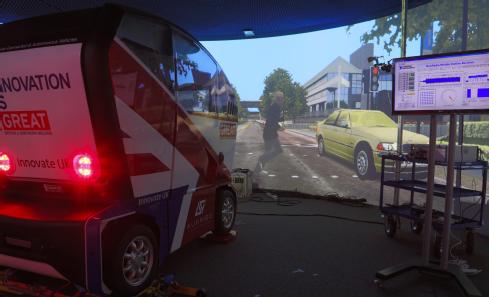
However this crucial wireless communications technology is not just being designed to deliver HD content to in-car entertainment systems, but it will allow autonomous vehicles to rapidly share large quantities of data with each other and with traffic management systems. This will include precise 3D road maps created by LiDAR (like radar but it uses laser light instead of radio waves), high definition video images of the vehicles surroundings, and traffic information.
WMG enhances collaborative R&D capability with the UK’s most advanced 5G mmWave test platform
Mobile telecommunication operators, infrastructure suppliers, car manufacturers, and local councils are all seeking to understand the benefit from the leap in bandwidth promised by 5G technologies, and are lining up to use the very latest 5G evaluation technology now available at the University of Warwick.
WMG at the University of Warwick has just acquired the UK’s most advanced diagnostic and testing platform for a key part of the 5G spectrum - mmWave. This technology promises to deliver a step change in the amount of data that can be wirelessly transmitted, opening up opportunities for a range of new services and products, including those associated with enabling connected and autonomous vehicles (CAVs).
This has been provided by a £250,000 WMG Centre HVM Catapult award for facilities and people alongside an equipment collaboration with National Instruments (NI) for their mmWave technology platform.
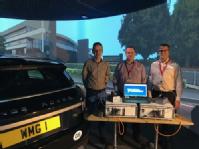 WMG’s Connected and Autonomous Vehicles research team are already working with a range of industrial partners on connectivity, verification and validation, and the understanding and optimisation of user/customer interaction with driverless technology. This new facility will further enhance WMG’s vison to be the UKs “go to” CAV development platform providing unrivalled research and testing that will accelerate product introduction, infrastructure design and implementation. The technology developed will be transferable to other sectors beyond automotive.
WMG’s Connected and Autonomous Vehicles research team are already working with a range of industrial partners on connectivity, verification and validation, and the understanding and optimisation of user/customer interaction with driverless technology. This new facility will further enhance WMG’s vison to be the UKs “go to” CAV development platform providing unrivalled research and testing that will accelerate product introduction, infrastructure design and implementation. The technology developed will be transferable to other sectors beyond automotive.
WMG to test new location system for intelligent vehicles
Intelligent vehicles and smart devices could gain more accurate location awareness by ‘fusing’ Global Navigation Satellite Systems (GNSS) and WiFi signals – and a test for this is the focus of an Innovate UK project led by Spirent Communications and involving WMG at the University of Warwick.
The £694k ‘Enhanced Assured Location Simulator Leveraging WiFi and GNSS Sensor Fusion’ (ELWAG) project will seek to develop to test this pioneering hybrid WiFi and GNSS location system in a cost-effective, repeatable and safe environment – so that manufacturers can verify its performance.
Researchers at WMG, led by Dr Matthew Higgins, will play a significant role in the project. They will take physical layer measurements of both Wi-Fi and GNSS signals in Autonomous Vehicle scenarios, in and around the University of Warwick campus and the local urban road network.




